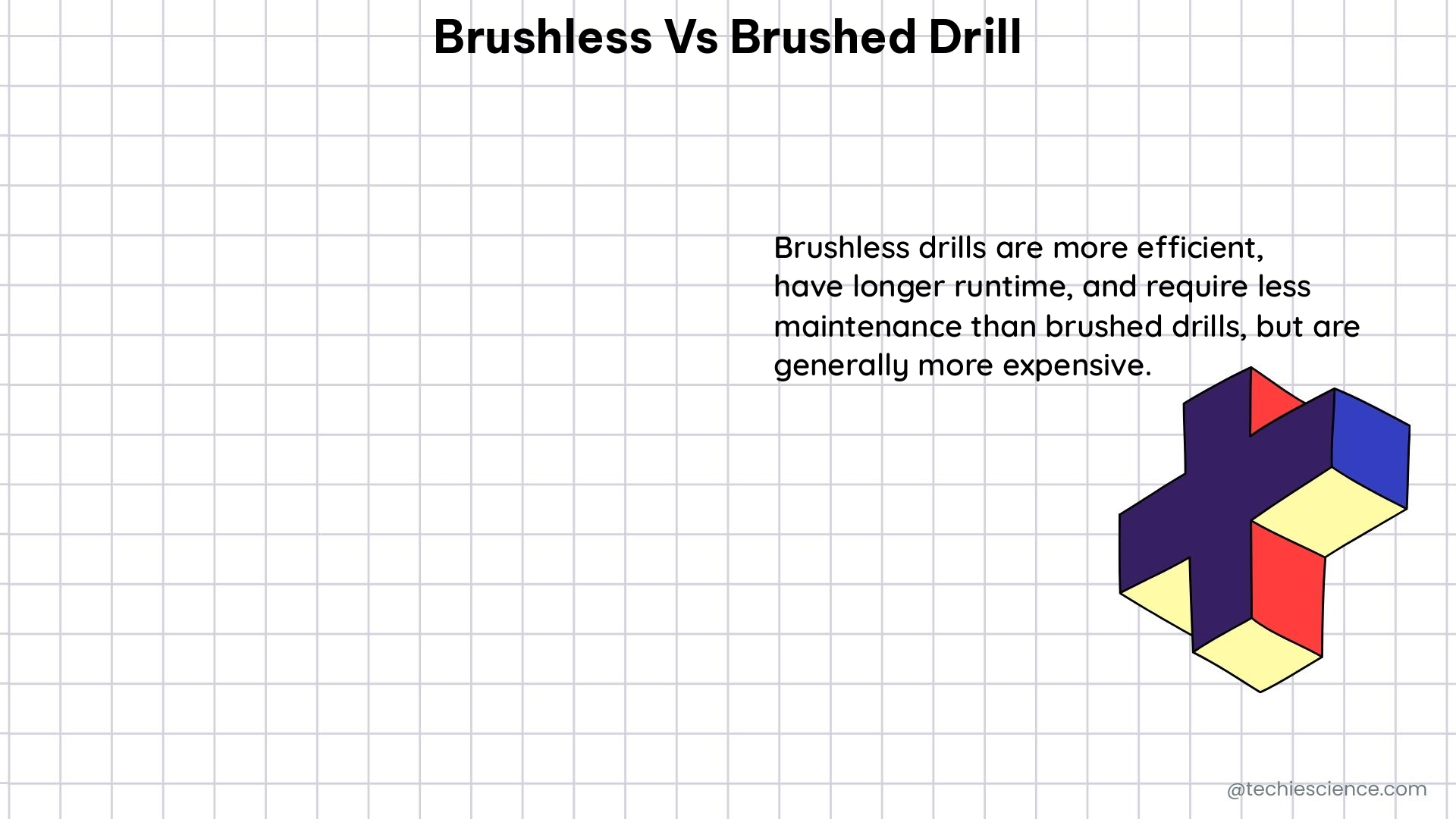Brushless and brushed drills are two distinct types of power tools that serve the same fundamental purpose, but their internal mechanisms, performance characteristics, and cost structures differ significantly. This comprehensive guide aims to provide electronics students with a deep understanding of the technical specifications, electronics, and numerical comparisons between these two drill types, empowering them to make informed decisions when selecting the appropriate tool for their projects.
Motor Design: The Heart of the Drill
Brushed Drills
Brushed drills utilize a traditional brushed DC motor, which consists of a rotor, stator, and brushes. The brushes are responsible for transferring electrical current to the rotor, creating a magnetic field that causes the rotor to spin. This design, while relatively simple and cost-effective, introduces friction and wear, leading to reduced efficiency and the need for regular maintenance.
Brushless Drills
In contrast, brushless drills employ a brushless DC motor, which eliminates the need for physical brushes. Instead, the motor uses electronic commutation to transfer electrical current to the rotor, resulting in a more efficient and durable design. This advanced motor technology is a key differentiator between brushless and brushed drills.
Power and Efficiency: Unleashing Maximum Performance

Torque and Speed
Brushless motors are generally more efficient than their brushed counterparts, as they eliminate the friction caused by the brushes. This translates to higher power output and torque capabilities. For instance, a 20V brushless drill can deliver up to 650 in-lbs of torque, while a 20V brushed drill may only reach 450 in-lbs of torque.
Battery Life
The increased efficiency of brushless motors also leads to longer battery life. A brushless drill with a 2.0 Ah battery can typically run for 30-40 minutes under heavy load, compared to a brushed drill with the same battery capacity, which may only last for 20-25 minutes.
Size and Weight: Compact and Ergonomic Design
Compact Form Factor
Brushless motors are generally smaller and lighter than their brushed counterparts, as they do not require bulky components such as brushes and commutators. This compact design translates to a more ergonomic and maneuverable drill, making it easier to work in tight spaces or for extended periods.
Weight Reduction
The reduced size and weight of brushless drills can be particularly beneficial for users who need to perform overhead work or carry the tool for extended periods. On average, a brushless drill can weigh up to 20% less than a comparable brushed model, reducing fatigue and improving overall user experience.
Maintenance and Durability: Hassle-Free Operation
Brush Replacement
Brushed drills require regular maintenance, such as replacing the brushes every 50 to 60 hours of use. This can be a time-consuming and costly process, especially for professionals who use their tools extensively.
Wear-Free Design
Brushless drills, on the other hand, do not have any brushes that can wear out, eliminating the need for regular maintenance. This wear-free design contributes to the overall durability and longevity of brushless drills, making them a more reliable choice for long-term use.
Noise and Heat: Quiet and Efficient Operation
Noise Levels
Brushed drills tend to produce more noise due to the friction and vibration generated by the brushes. Brushless drills, with their electronic commutation and reduced friction, operate much more quietly, often reducing noise levels by 5-10 dB compared to their brushed counterparts.
Heat Generation
Similarly, the friction in brushed drills can lead to increased heat generation, which can affect the tool’s performance and user comfort. Brushless drills, with their more efficient design, generate less heat, resulting in a more comfortable and consistent operating temperature.
Electronics: Advanced Control and Features
Motor Control
Brushless drills utilize advanced electronic controllers to regulate the current flowing to the motor, allowing for precise speed and torque control. This electronic control system enables the drill to maintain a constant speed under load, ensuring consistent performance.
Additional Features
The electronic controller in a brushless drill also provides additional features, such as variable speed control, electronic clutch, and overload protection. These advanced capabilities allow the drill to deliver precise and controlled performance, making it well-suited for delicate tasks like drilling holes in thin materials.
Numerical Comparisons: Quantifying the Differences
- Brushed Drill Specifications:
- Maximum Torque: 450 in-lbs
- No-Load Speed: 1500 RPM
-
Power Output: 1.09 HP
-
Brushless Drill Specifications:
- Battery Capacity: 2.0 Ah
- Maximum Current Draw: 30 A
- Battery Life: 0.067 hours or 4 minutes
These numerical examples illustrate the performance differences between brushed and brushless drills, highlighting the advantages of the brushless design in terms of power output and battery life.
Conclusion
Brushless drills offer several compelling advantages over their brushed counterparts, including higher power output, longer battery life, lower noise and heat generation, and reduced maintenance requirements. However, these advanced features come at a higher cost, making brushless drills a more premium option compared to brushed drills.
When selecting a drill for your electronics projects, carefully consider your specific needs, budget, and the trade-offs between brushless and brushed designs. By understanding the technical specifications, electronics, and numerical comparisons presented in this guide, you can make an informed decision that best suits your project requirements and ensures optimal performance.
References:
– Woodsmith, “Brushless vs Brushed Drill | Review Pages by Woodsmith”, 2024-03-18, https://www.woodsmith.com/review/brushless-vs-brushed-drill/
– Consumer Reports, “Should You Get a Brushless Drill?”, 2020-10-18, https://www.consumerreports.org/cordless-drills/should-you-get-a-brushless-drill/
– IBT Inc., “Brushed vs. Brushless Power Tools: What to Know | IBT”, 2019-02-03, https://ibtinc.com/brushed-vs-brushless-power-tools/
– Reddit, “Practical Differences Between Brushed and Brushless Tools”, 2022-11-27, https://www.reddit.com/r/Tools/comments/z5p8vw/practical_differences_between_brushed_and/
– Bogleheads.org, “Brushed vs brushless drill/impact driver”, 2021-05-17, https://www.bogleheads.org/forum/viewtopic.php?t=349062

Hi……I am Kaushikee Banerjee completed my master’s in Electronics and Communications. I am an electronics enthusiast and am currently devoted to the field of Electronics and Communications. My interest lies in exploring cutting-edge technologies. I’m an enthusiastic learner and I tinker around with open-source electronics.